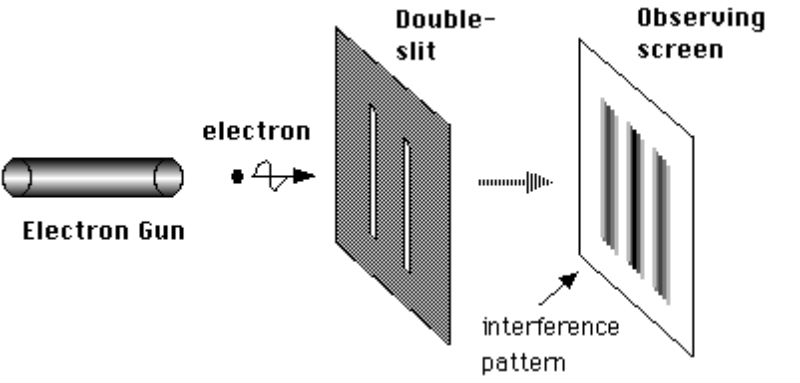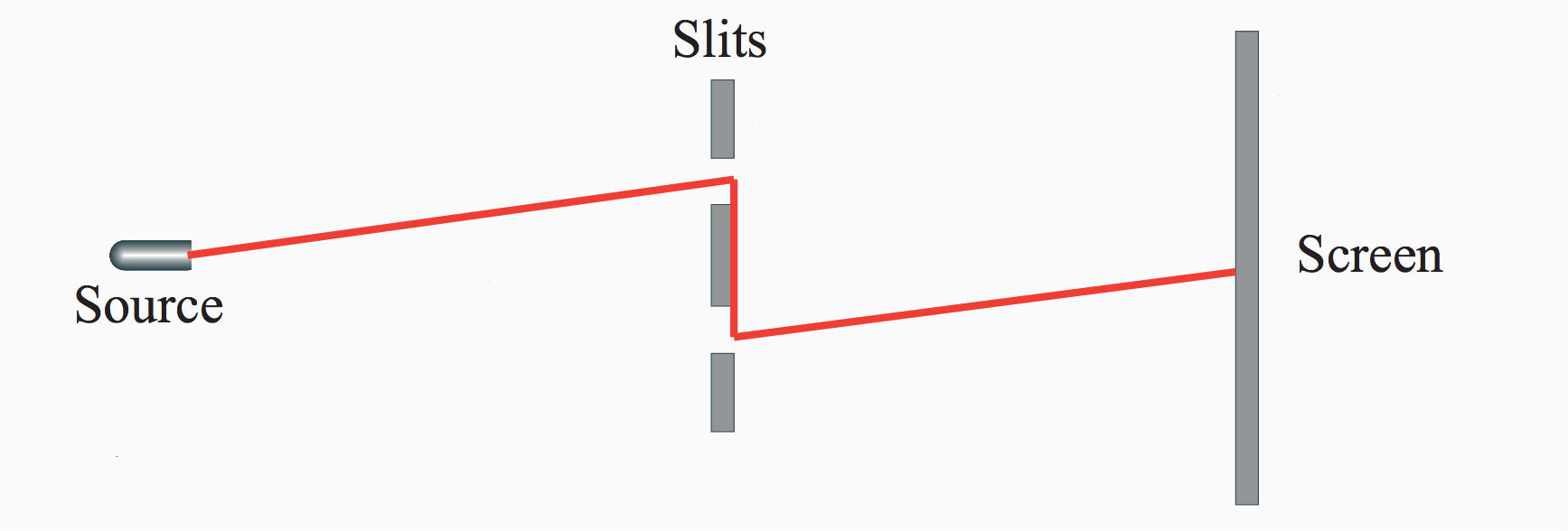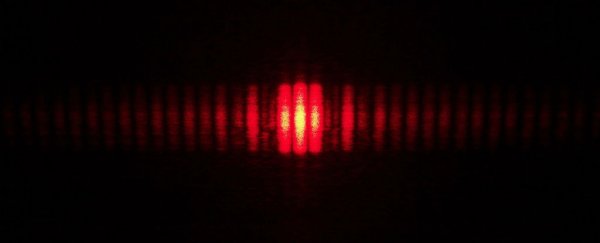An iconic physics experiment used to demonstrate the strange properties of the quantum world is now even stranger than we thought, and not only could it force us to rethink some fundamental aspects of quantum mechanics - it could be the key to finally unifying the two biggest theories of modern physics.
Physicists have found evidence that a key component of the classic 'double-slit experiment' could actually be tested, and seeing as it appears to violate the current laws of physics, testing it could give us a whole new way to investigate the holes in quantum mechanics.
Let's start at the beginning, with the iconic double-slit experiment, which gave us one of the strangest experimental results every observed in modern physics.
The concept is fairly simple: you have a board with a slit in the middle, and you fire ping-pong balls through it. They make a mark as they hit a screen behind the board. Pretty soon, a pattern will emerge on the screen: a straight, vertical line mirroring the shape of the slit.
If you repeat the experiment with two vertical slits in the board, you should end up with two vertical lines on the screen behind.
Next, you take the board with the single slit, and fire a wave (like a water or sound wave) at it. The wave will go through the slit, and will hit the screen behind with its most intense point being directly in line with the slit.
In other words, the peak of the wave will always hit the screen just directly behind the slit - just like the ping-pong balls.
But when you fire the waves through double slits, they will start to mess with each other, and create what's known as an interference pattern. That means there won't be two clear lines behind the slits, but a pattern of several lines with blank spaces in between. (See the pattern at the top of the page.)
That's not so strange though - we know that matter (ping-pong balls) doesn't behave in the same way as waves. But when physicists fired particles like electrons and photons at the double slit, expecting them to act like matter, they instead acted like waves, producing an interference pattern.
And it gets even crazier than that. These electrons and photons aren't acting like matter, but they aren't acting like waves either, because they're not messing with each other to produce an interference pattern.
We know this because if you fire electrons or photons at the double-slit board one at a time, they will still eventually produce the interference pattern.
 NekoJaNekoJa/Wikimedia
NekoJaNekoJa/Wikimedia
That should be impossible, because these single particles cannot possibly know where the next particle will position itself, or where the particles before it have ended up, so how on earth could they create this pattern with zero interaction?
The experiment is the perfect example of how the quantum world behaves entirely differently to matter on a larger scale, but also exemplifies how there are serious gaps in our understanding of quantum mechanics, because we simply cannot explain it.
As theoretical physicist Richard Feynman once said, this experiment presents the "central mystery" of the quantum world.
In fact, Feynman even went so far as to call it the "only mystery" of quantum mechanics, and it could be the key to figuring out why our two fundamental theories of physics - quantum mechanics and general relativity - simply don't match up.
Funnily enough, we can easily predict where an electron or photon will end up on the screen during the double-slit experiment, even if we don't understand at all why they do it.
The predictions are based on a principle called the Born rule, but it has its own problems, as Anil Ananthaswamy explains for New Scientist:
"[T]here is no fundamental reason why the Born rule should hold. It seems to work in all the situations we've tested, but no one knows why.
Some have attempted to derive it from the 'many worlds' interpretation of quantum mechanics, which proposes that all the possible states of a quantum system could exist in different, parallel universes - but such attempts have been inconclusive."
Because the Born rule can't be explained by any current understanding of physics, it could be the key to explaining some of the fundamental gaps in the current laws of quantum mechanics, and why no physicist has ever managed to seamlessly partner it with Einstein's theory of general relativity to create a much-coveted and unifying 'theory of everything'.
Basically, if you can figure out how to 'break' or violate the Born rule, you've potentially found the exact spot where our current understanding of quantum mechanics is incomplete.
"If the Born rule is violated, then a fundamental axiom of quantum mechanics has been violated, and it should point to where one needs to go to find quantum gravitational theories," James Quach at the Barcelona Institute of Science and Technology in Spain told Ananthaswarmy.
And he's now proposed a way that we could violate the Born rule, and actually test this violation in experiments.
In his new paper, Quach describes how if you consider all the possibilities for where an electron or photon could end up on the screen as it's fired through the double-slit board, there could be some weird, 'non-classical' paths that will lead to different interference patterns that the Born rule cannot predict.
This is based on something that Feynman himself had proposed back in 1948 - that "all possible paths between points contribute to the wave function," says Quach.
"[T]his even includes paths that go through one slit then the other" before hitting the screen, he adds.
This gives us three possible paths for the particle instead of two: the first path is going through slit A; the second path is going towards slit B; and the third path is going towards the screen from slit B.
 James Quach
James Quach
"Quach shows that if you account for interference between all three paths, the probabilities will be different from what the Born rule predicts," says Ananthaswarmy.
Quach proposes that you can test this by having two detectors placed after the double-slit board: one that detects whether a particle has gone through slit A or B, and another that detects that a particle has gone through one or both slits, but does not know which one.
"The inclusion of these non-classical [paths] provides higher-order corrections to the interference patterns," he concludes.
To be clear, his proposal has yet to be formally peer-reviewed, so this is just the beginning of an idea, and it's now been put up for scrutiny by the physics community on the pre-print website, arXiv.org.
But this is something that physicists have been working on for more than half a century now, and we keep seeing hints that it could work.
Hopefully, someone is going to take Quach up on his proposal and tries this thing out for real, because it could reveal what we're missing in our fundamental understanding of the reality.
Quach's paper can be found online here, and here's more on the double-slit experiment:

